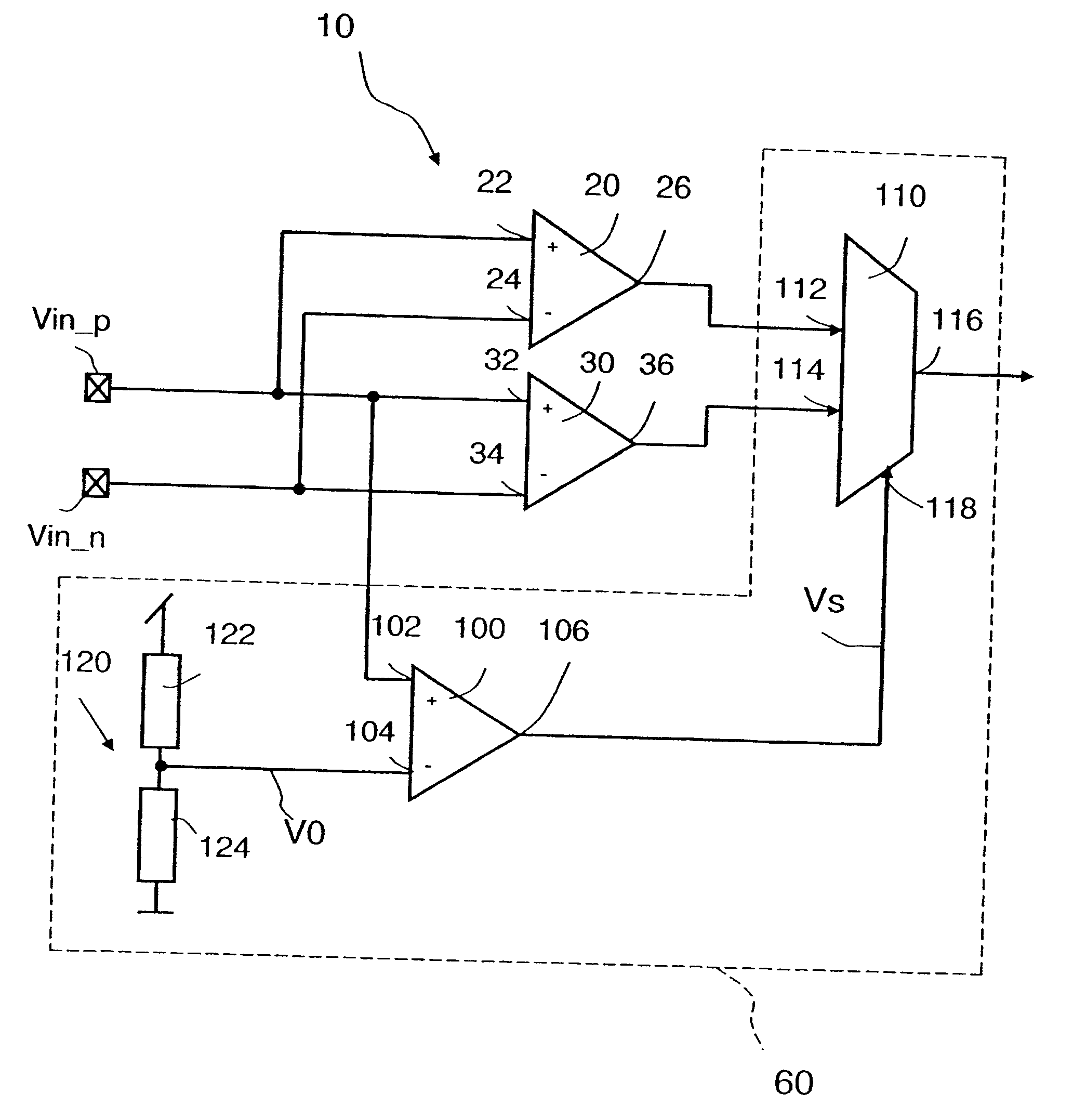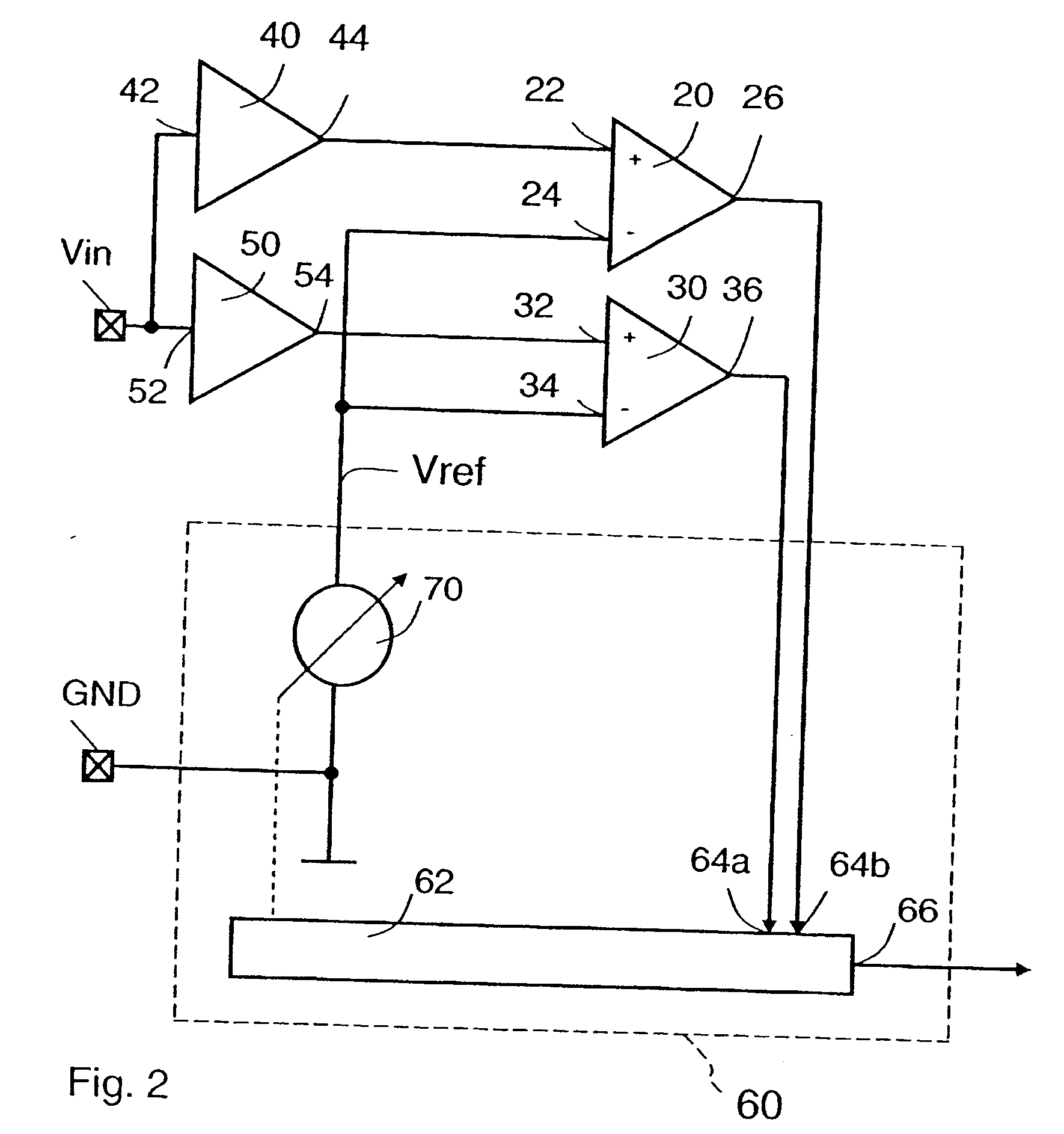Comparator Circuit and Method for Operating a Comparator Circuit
a comparator circuit and comparator technology, applied in the direction of pulse manipulation, multi-input and output pulse circuits, instruments, etc., can solve the problems of limiting the useable input voltage, offset errors and gain errors affecting the comparator accuracy, and low overall power consumption, and achieve high accuracy
- Summary
- Abstract
- Description
- Claims
- Application Information
AI Technical Summary
Benefits of technology
Problems solved by technology
Method used
Image
Examples
Embodiment Construction
[0045] A preferred embodiment of the invention is depicted in FIG. 1. A comparator circuit comprises a first comparator 20 and a second comparator 30 and a selection unit 60. The selection unit 60 is indicated with a dotted line. In this embodiment, the comparator circuit represents a high accuracy rail-to-rail comparator building block.
[0046] An input voltage signal Vin_p is fed into an input port 22 and an input voltage signal Vin_n is fed into an input port 24 of the first comparator 20. An output port 26 of the first comparator 20 feeds an output signal to the selection device 60.
[0047] An input voltage signal Vin_p is fed into an input port 32 and an input voltage signal Vin_n is fed into an input port 34 of the second comparator 30. An output port 36 of the second comparator 30 feeds an output signal to the selection unit 60.
[0048] Most preferably, the first comparator 20 is equipped with pMOS transistors and therefore adapted for low input voltage levels and the second com...
PUM
 Login to View More
Login to View More Abstract
Description
Claims
Application Information
 Login to View More
Login to View More - R&D
- Intellectual Property
- Life Sciences
- Materials
- Tech Scout
- Unparalleled Data Quality
- Higher Quality Content
- 60% Fewer Hallucinations
Browse by: Latest US Patents, China's latest patents, Technical Efficacy Thesaurus, Application Domain, Technology Topic, Popular Technical Reports.
© 2025 PatSnap. All rights reserved.Legal|Privacy policy|Modern Slavery Act Transparency Statement|Sitemap|About US| Contact US: help@patsnap.com



